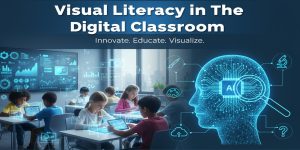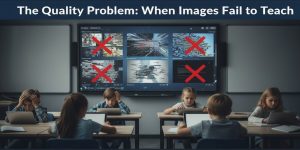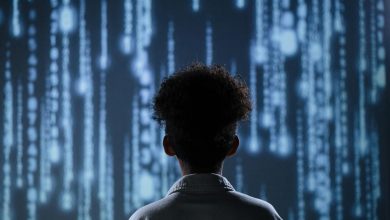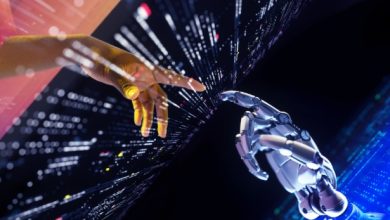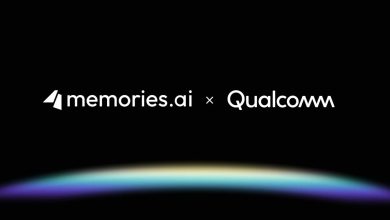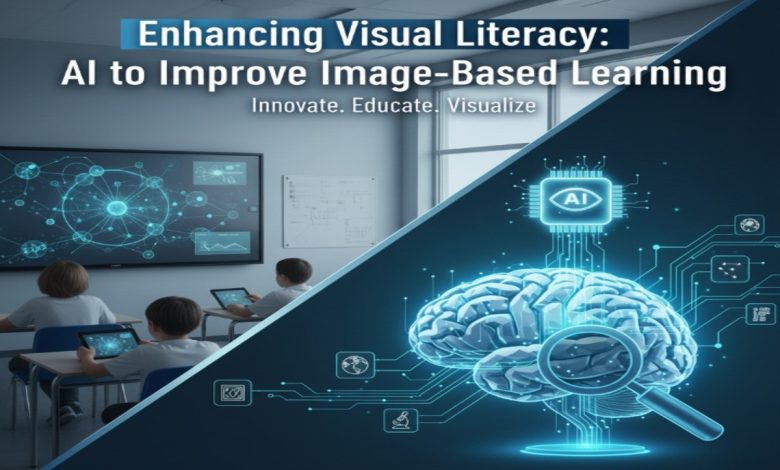
The Visual Turn in Education
Today’s students scroll through hundreds of images before breakfast. They decode memes, interpret infographics, and absorb complex ideas through visual storytelling. This generation doesn’t just prefer images over text—they think in visuals.
Visual literacy has become essential in modern education. It’s the ability to interpret, analyze, and create meaning from images. Yet many classrooms still rely on outdated, low-quality visuals that undermine this critical skill.
Blurry diagrams and pixelated maps don’t just look unprofessional. They actively reduce comprehension and engagement. Students struggle to identify details, miss important patterns, and lose interest quickly.
Smart tools like AI photo enhancers are changing this reality. They’re helping educators transform poor-quality images into clear, detailed learning materials that students can actually use.
Visual Literacy in the Digital Classroom
Image-based learning isn’t a trend—it’s cognitive science in action. Research shows students retain 60 to 70 percent more information when paired with high-quality visuals. The brain processes images 60,000 times faster than text.
Biology classrooms depend on detailed cell diagrams and anatomical illustrations. Geography students need sharp satellite imagery to understand terrain and climate patterns. Design programs require high-resolution references for texture, color, and composition analysis.
Modern education has shifted from passive viewing to active interpretation. Students don’t just look at images anymore—they analyze, annotate, and build knowledge from them. This makes visual quality more important than ever before.
When images are crisp and detailed, students engage more deeply. They ask better questions, make stronger connections, and develop genuine curiosity about the subject matter.
The Quality Problem: When Images Fail to Teach
Many educational materials weren’t designed for today’s high-resolution displays. Textbook publishers scan decades-old prints. Online repositories compress images to save bandwidth. Teachers download visuals from outdated databases.
The results are predictable and frustrating. Biology students squint at blurred mitochondria in cell diagrams. Geography learners can’t distinguish forest from farmland in pixelated satellite images. Art students work with poorly scanned historical references that obscure brushwork and detail.
Teachers know these visuals fall short. But most lack the time or technical skills to fix them manually. Professional photo editing requires expensive software and hours of training.
The education sector desperately needs automated solutions. Tools that can restore quality quickly, without requiring design expertise or consuming precious prep time.
The AI Revolution: Smarter Visuals for Smarter Learning
Advanced image technology has finally caught up with education’s needs. AI-powered tools can analyze and enhance images in seconds, no manual editing required.
An image enhancer uses machine learning to improve clarity, restore lost details, and remove visual noise automatically. These platforms understand the difference between meaningful detail and random artifacts. They sharpen edges, boost contrast, and enhance colors while maintaining natural appearance.
The benefits for education are remarkable. Faded historical photographs regain their original clarity. Low-resolution diagrams upscale to HD or 4K without introducing blur. Poorly scanned documents become readable again.
Modern photo enhancer technology works intelligently. It doesn’t just apply generic filters—it analyzes each image’s specific problems and applies targeted corrections. An AI photo enhancer can distinguish between compression artifacts and actual texture, ensuring improvements look natural.
Teachers can now rescue valuable teaching materials previously considered unusable. This extends the lifespan of existing resources while dramatically improving their educational impact.
How AI Image Tools Improve Learning Outcomes
Clearer visuals translate directly into better comprehension. When students can see details clearly, they grasp concepts faster and retain them longer.
Biology students examining enhanced organ diagrams can identify individual tissue layers and cellular structures. This precision matters when learning complex systems like the cardiovascular network or nervous system pathways.
Geography learners studying high-resolution maps notice elevation changes, vegetation patterns, and urban development details they’d miss in compressed versions. These observations lead to deeper understanding of environmental relationships and human geography.
Art and design students benefit enormously from improved texture and color accuracy. They can study brushstroke techniques in classical paintings or analyze fabric weaving patterns in historical garments.
Image upscaling in learning isn’t about aesthetics alone. It’s about giving students the visual information they need to build accurate mental models. Cognitive science confirms that learning requires clear sensory input.
When images fail to provide that clarity, students fill gaps with guesses. Enhanced visuals eliminate that guesswork, leading to more accurate understanding and stronger knowledge retention.
AI Empowering Educators and Students Alike
The democratization of image enhancement has profound implications for education. Teachers no longer need professional design skills to improve their materials. They can enhance dozens of images in the time it once took to fix one.
This efficiency matters enormously in resource-constrained schools. A single teacher often prepares materials for hundreds of students across multiple courses. Automated enhancement tools multiply their effectiveness without adding workload.
Students gain creative control too. They can improve visuals for research projects, presentations, and portfolios. A student creating an ecology poster can upscale wildlife photographs for professional-looking results.
This accessibility levels the playing field. Schools without graphic design departments can produce materials rivaling well-funded institutions. Students from any background can create polished visual work.
The technology removes technical barriers between ideas and execution. When students spend less time fighting with image quality, they invest more energy in actual learning and creative thinking.
The Future: Visual Literacy in an AI-Driven Classroom
Emerging technologies promise even greater possibilities. Augmented reality and virtual reality applications depend heavily on visual clarity. Enhanced images will make immersive learning experiences more effective and accessible.
Accessibility features are evolving rapidly too. AI tools can increase contrast for visually impaired learners or add descriptive metadata for screen readers. These adaptations make visual learning more inclusive.
The role of smart tools in education will continue expanding. But technology works best as a supportive collaborator, not a replacement for human educators. Teachers bring context, judgment, and pedagogical expertise that no algorithm can match.
The goal isn’t to automate teaching. It’s to remove technical obstacles so educators can focus on what they do best—inspiring curiosity and guiding discovery.
A Clearer Path to Knowledge
Visual literacy shapes how students understand and engage with the world. As education becomes increasingly visual, image quality directly impacts learning outcomes. Poor visuals create barriers; enhanced visuals open pathways to understanding.
AI-powered image tools have made professional-quality enhancement accessible to every classroom. These technologies boost comprehension, increase retention, and make learning more engaging for visual thinkers.
Photo enhancer and AI photo enhancer platforms represent more than technical solutions. They’re catalysts for better teaching and deeper learning. They transform visual materials from potential obstacles into powerful educational assets.
Educators ready to embrace these possibilities should explore platforms like EnhanceIT PRO to bring clearer visuals and smarter learning experiences into their classrooms. When images communicate with perfect clarity, knowledge follows naturally.

